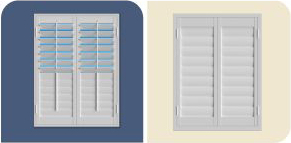How Window Shutters Allow You to Control Room Temperature
Closed shutters are the next best defence against the extreme temperature and wind in Sacramento, coming right after windows. Other window treatments such as shades, blinds, and draperies block most of the temperature from outside, but not all. And, when you need a quality-made window treatment that gives you a pleasant seat by the window, Polywood® shutters are the optimal choice.
Polywood shutters are built from a synthetic polymer that insulates up to 70% better than an equivalent traditional wood shutter. In fact, the Polywood Shutter Insulating System blocks as much as 30 degrees of airflow and reduces heat transfer by 45.96%. This results in energy savings for your wallet – and full control over room temperature.
The heating and cooling system in your house takes less time to work now that you’ve reduced most of the impact from the weather outside. When you want to let in some of the light and be more exposed to the outside temperature, just move the louvers and adjust them to how you’d like them. You can get more window treatment temperature control by closing your shutters completely.
How to Close Your Shutters for Optimal Temperature Control
Two parts of your shutters need to be closed to seal off external temperature: the panels and the louvers.
To close your Polywood shutter panels properly, swing them toward the window. As you push the panels into the shutter frame, make sure to interlock the pieces of weatherstripping along the vertical ends of your shutters.

To properly close your louvers, push the tilt rod toward the louvers and check that the top of the tilt rod will fit into the "mouse hole," which is above the top louver. Do this by running your hand up the tilt rod, pushing in as you go. This is especially true for taller shutters. Sometimes a small push at the bottom of the tilt rod isn't enough and leaves gaps at the top.



